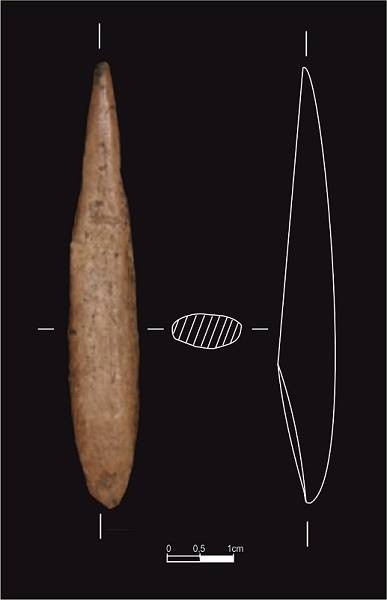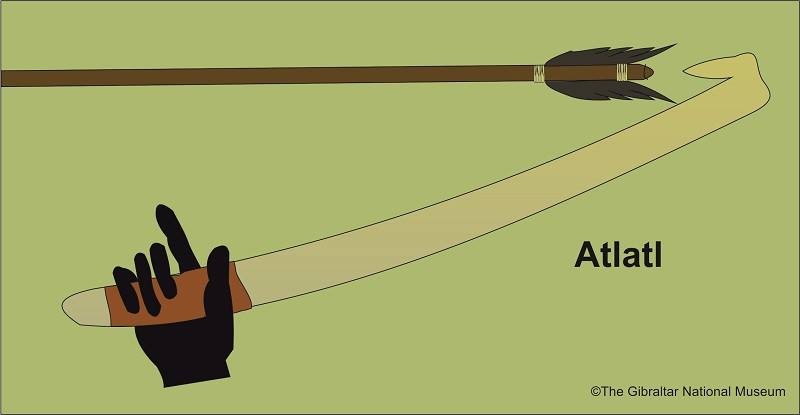solutrean assegai bone spear point

One of the two assegai bone spear points with a
bevelled base from Gorham's Cave.
Solutrean Assegai Bone Spear Point
Within Level 3b at Gorham’s Cave, attributed to the Upper Palaeolithic, in this case the Solutrean (approx. 18,000-20,000 years ago), two assegai bone spear points with a bevelled base have been recorded. Today we bring you one of them.
These spear points, produced from bone or deer antler, were hafted onto the sharpened end of a lightweight shaft. These hunting spears, known as ‘assegai’, could be launched by hand directly or with the help of an ‘atlatl’. An atlatl, is a spear-throwing tool that uses leverage to achieve greater velocity. Assegai launched using an atlatl would have had feather fletching at the back end just like an arrow.
Atlatls were made from wooden sticks or similar materials. In order to launch an assegai or spear, it is held at one end with the throwing hand, with its pointed and angled projection at the other end which fits into a notch at the rear of the spear. It was launched by pushing hard, providing greater momentum due to the elongation of the arm’s natural lever.
Bone tools became diverse and widespread in Europe during the Upper Palaeolithic. Although they were not unknown to the Neanderthals, it is in the Upper Palaeolithic that we see a progressive increase in their use. It was then during the Magdalenian when the use of bone tools became widespread.

An example of how these bone spear points would have been hafted onto a light wooden spear or 'assegai'.

An example of an atlatl used to launch the assegai.

Sequence showing how an assegai being launched with the use of an atlatl.
Published: April 09, 2020
Other similar VM - Archaeology
18-20 Bomb House Lane
PO Box 939,
Gibraltar
